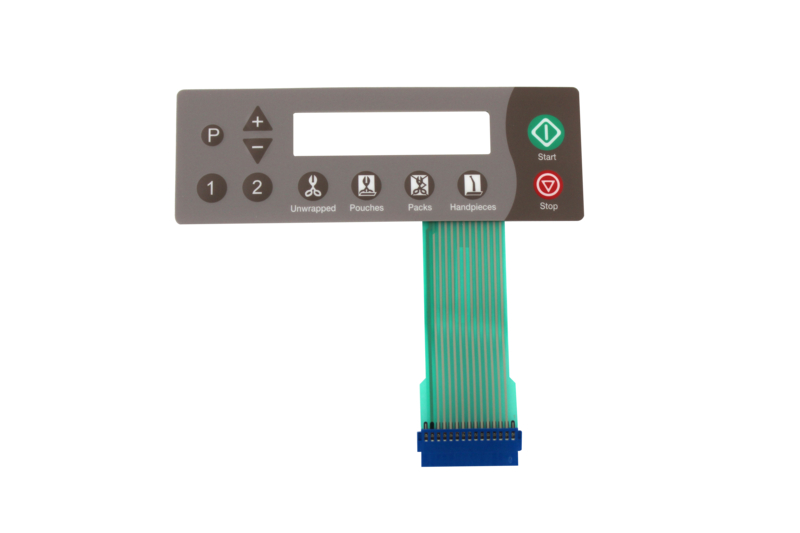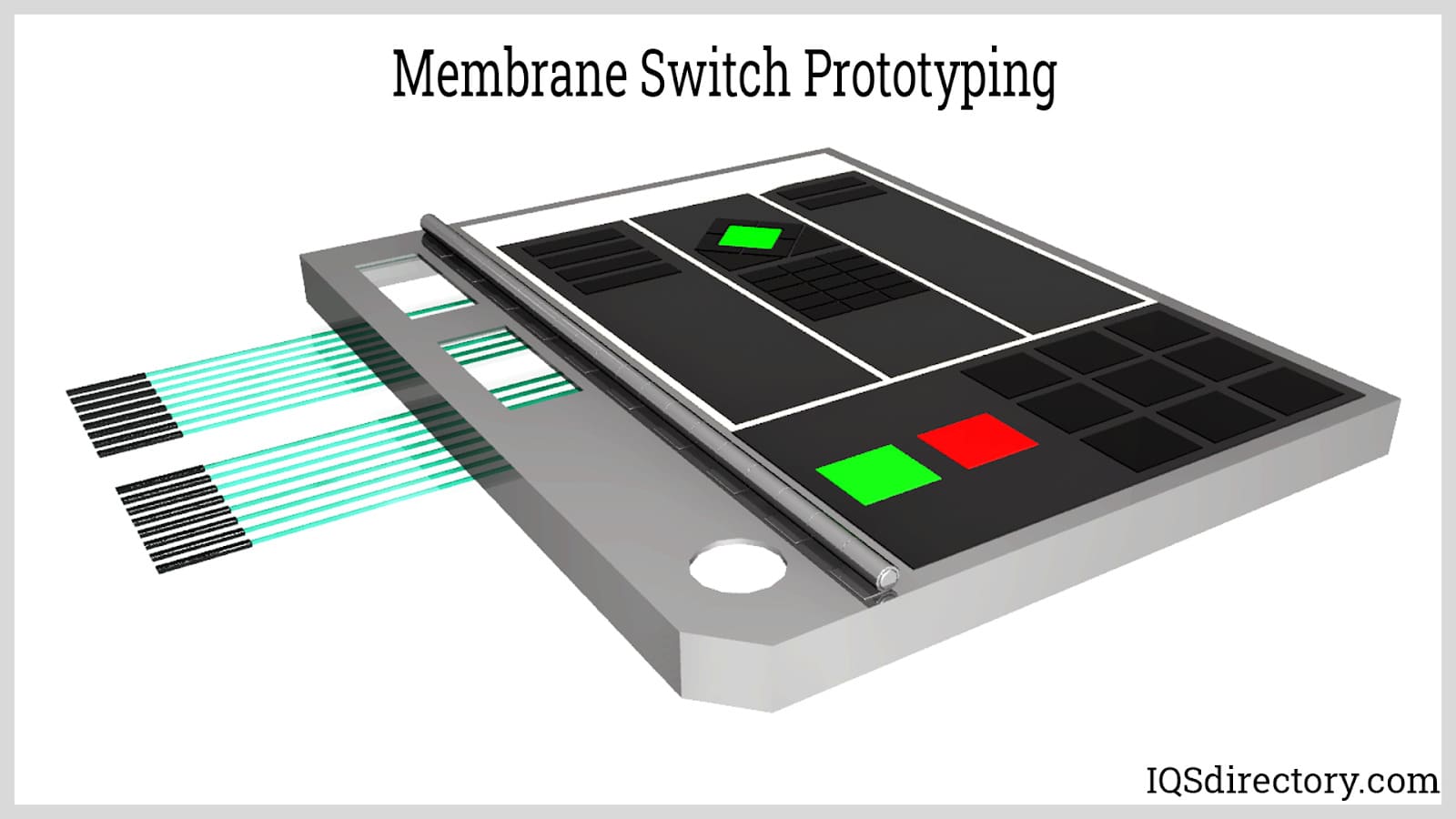An creative membrane switch manufacturer can provide next-gen features and materials.
An creative membrane switch manufacturer can provide next-gen features and materials.
Blog Article
Everything About Membrane Layer Switch: Recognizing Its Style and Capability
When you consider the control user interfaces in contemporary devices, membrane layer switches usually enter your mind. These components are greater than just switches; they mix style and functionality seamlessly. Recognizing exactly how they function and what makes them effective can transform your perspective on day-to-day electronics. There are nuances to their style and performance that you may not be aware of. Allow's explore what collections membrane layer changes apart from various other control systems.
What Are Membrane Layer Buttons?

Membrane layer buttons can also be tailored concerning form, size, and graphics, permitting producers to produce distinct interfaces tailored to particular products. Overall, membrane layer buttons play a significant role in boosting individual experience across a broad array of applications.
How Membrane Layer Switches Over Work
When you push a key on a membrane button, it turns on a simple yet efficient system. The top layer, typically made from flexible material, lowers onto a conductive layer under it. This action bridges the gap between conductive traces, finishing an electric circuit. As quickly as the circuit shuts, it sends a signal to the tool's controller, which interprets your input.
You'll discover that the tactile comments differs based on the button layout, offering either a soft click or a much more obvious action. Once you release the key, the membrane go back to its initial position, resuming the circuit and stopping the signal. This procedure takes place almost instantaneously, making certain a receptive individual experience.
Membrane switches are popular due to their sturdiness and resistance to dirt and moisture, making them suitable for various applications, from home devices to clinical tools. Comprehending this procedure aids you value their prevalent usage.
Secret Components of Membrane Buttons
Recognizing the crucial components of membrane layer switches is basic for comprehending their functionality and layout. The safety layer shields versus environmental variables and use, expanding the switch's life expectancy. By recognizing these elements, you'll gain understanding into exactly how membrane changes operate and their value in various applications.
Products Used in Membrane Layer Switch Style
The efficiency and sturdiness of membrane layer switches greatly depend on the products made use of in their style. You typically run into polyester and polycarbonate as main substratums because of their superb strength and adaptability. These materials withstand scrapes and chemicals, making them ideal for requiring atmospheres.
The conductive layers typically use silver or carbon, selected for their reliability and conductivity. membrane switch manufacturer. Silver gives remarkable performance, while carbon is an affordable option. For the overlay, you could think about a matte or glossy surface, depending on your aesthetic demands and customer experience
Adhesives play a crucial function too; they bond layers firmly and assure longevity. Make sure to select adhesives that stand up to environmental aspects like temperature and humidity. Do not neglect the value of an excellent printing technique for graphics, as it improves both capability and aesthetic allure. Selecting the appropriate materials will assure your reference membrane layer button stands the test of time.
Style Factors To Consider for Membrane Switches
While designing membrane layer switches, it's important to take right into account different factors that affect their performance and user experience. Start by concentrating on the format and button dimension; make certain they're instinctive and easy to browse.
Don't neglect the graphic design; clear labeling and shade comparison are considerable for visibility. Confirm your style suits ecological variables, like dampness or temperature variants, which could affect efficiency. Keep in mind the value of testing models with real customers to gather feedback and make required modifications. This iterative process aids you improve the design, confirming it satisfies both practical and aesthetic requirements successfully. By thoroughly considering these elements, you'll develop a membrane button that boosts usability and contentment.
Applications of Membrane Switches
Membrane layer switches are functional elements found in different applications, from industrial equipment to consumer electronic devices. You'll see their effect in devices that need resilient user interfaces and in tools that gain from streamlined layouts. Recognizing these applications aids you appreciate the functionality and functionality of membrane buttons in everyday modern technology.
Industrial Tools Use
When you're looking to enhance the functionality of commercial tools, membrane buttons supply a reputable option that combines durability with straightforward design. These buttons are perfect for severe atmospheres, giving resistance to dirt, moisture, and chemicals. Embrace membrane switches to improve your procedures and enhance overall performance.
Consumer Electronics Integration
In the domain name of customer electronics, membrane buttons play a crucial function in enhancing user interaction and tool functionality. You'll locate them in gadgets like microwaves, push-button controls, and pc gaming consoles, supplying a seamless method to communicate with technology. Their smooth style permits easy assimilation into numerous products, making controls user-friendly and easy to use. With their capacity to include graphics and backlighting, you can appreciate a contemporary aesthetic that enhances the gadget's total look. Membrane switches likewise assure longevity and resistance to dirt and dampness, prolonging the life expectancy of your electronic devices. By selecting membrane layer switches, you improve not simply the capability however also the style of your gadgets, making everyday communications smooth and pleasurable.
Benefits and Drawbacks of Membrane Layer Switches
While membrane layer switches use an array of benefits, they also come with some disadvantages that you should think about. One considerable benefit is their small layout, making them perfect for space-constrained applications.

Nevertheless, there are downsides. Membrane layer switches can have a shorter life expectancy contrasted to mechanical buttons, especially under heavy usage. They can additionally be less responsive, which may influence individual comments throughout procedure. Moreover, if damaged, repairing them can be challenging and commonly needs total replacement. Inevitably, their level of sensitivity to extreme temperatures and ecological conditions next might restrict their effectiveness in specific settings. Balancing these advantages and disadvantages will help you determine if find out here now membrane layer switches are the right fit for your job.
Frequently Asked Inquiries
Exactly How Lengthy Do Membrane Layer Switches Commonly Last?
Membrane switches normally last in between 5 to one decade, depending upon usage and environmental problems. You'll intend to examine elements like wear, exposure to moisture, and temperature variations to evaluate their durability efficiently.
Can Membrane Layer Switches Be Custom-made for Specific Styles?
Yes, you can customize membrane switches to fit specific styles (membrane switch manufacturer). You'll have the freedom to select colors, forms, and designs that match your job's needs, guaranteeing they blend seamlessly with your overall visual
What Is the Price Variety for Membrane Switch Production?
The expense range for membrane layer button production generally drops between $1 and $10 per device, depending upon elements like style intricacy, amount, and materials. You can get quotes from manufacturers to discover the very best alternative.

Are Membrane Changes Water Resistant or Immune?
Membrane layer buttons can be made to be waterproof or immune, depending on materials used and building techniques. If you need them for wet atmospheres, ensure you define those requirements during the layout process.
Just How Do Membrane Layer Switches Over Contrast to Typical Buttons?
Membrane layer buttons are usually thinner and a lot more flexible than standard buttons, offering a sleek layout. They're frequently easier to clean and incorporate, yet could not offer the responsive feedback you're utilized to with mechanical alternatives.
Verdict

Report this page